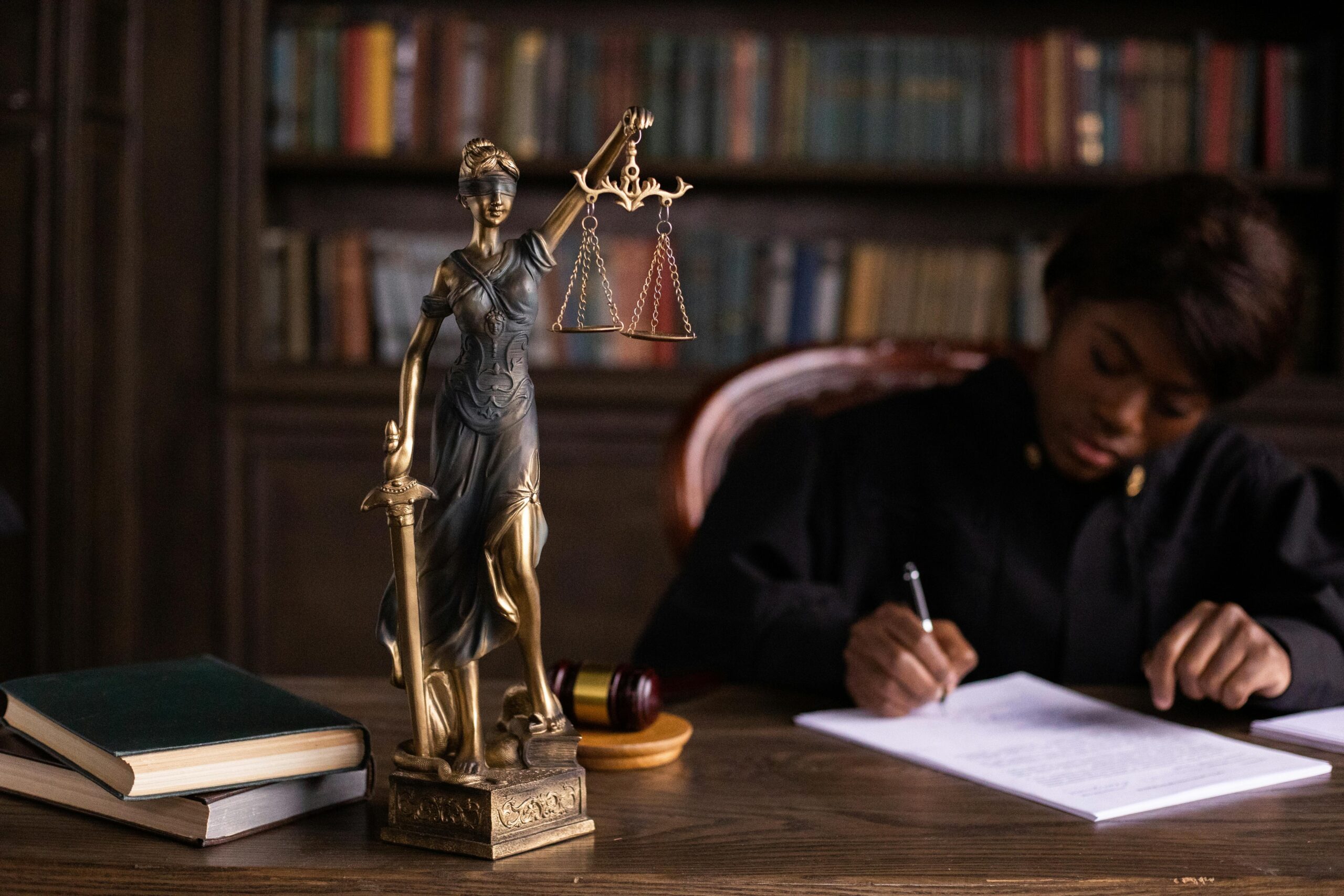Authored By: Ogunji Sylvia
Babcock University
Abstract
The fashion industry has become a significant contributor to global economic growth thus attracting a growing number of entrepreneurs and creatives. However, alongside its commercial success lies a surge in unfair practices such as rip-offs/ counterfeiting, passing off, where others take advantage of the hard work of brands who have made a name for themselves in the fashion industry. This is where intellectual property comes in. Not everyone is aware of the fact that intellectual property law cuts across literally all career field including the fashion industry. Thus this article explores the crucial role of intellectual property law in protecting the rights of fashion brands while addressing issues such as imitation, passing off. By exploring the legal mechanisms available, this article highlights how intellectual property law helps maintain fairness and innovation in the industry.
INTRODUCTION
Fashion is more than just an expression of personal style. It is a global industry that drives creativity, innovation of individuals and economic development. Everyday designers and brands work so hard to create aesthetically pleasing and functional designs that become intellectual assets, but then the problems of design theft, imitation, unfair competitions arise, leaving these hardworking designers to feel taken advantage of, frustrated and wondering how they can better protect their intellectual property from misappropriations.
Good thing they are not left unattended! Intellectual property law has proved itself over the years to be useful in the protection of such rights arising from ingenuity. This paper explores the role of intellectual property law in protecting the rights of these designers from unfair competition and exploitation through its existing IP legal frameworks such as trade mark, copyright, patent, to mention but a few. By understanding the functions and limitations of these IP frameworks, fashion brands and stakeholders can better protect their creative works.
BACKGROUND
Fashion is a form of self expression and cultural identity, reflected through clothing, accessories and personal style, influenced by time, place, society, and individual creativity.1Fashion is more than a fabric sewn together. It is an art of expression, a sense of belonging, social status. Some fashion trend and styles can hold symbolic meaning in history or represent certain ethnicities. Through adoption of these styles, individuals can connect with their heritage.2
The advancement of fashion is not restricted to the observance of aesthetic trends of the moment, but also includes the deeper roots of our collective identity. Each historical period has contributed significantly to shaping the way we dress, and each century has had its impact, reflecting the changes in society and political, economic, and cultural influences. The 21st century fashion is characterized by versatility, speed and tech driven change. Fast fashion is now dominant, pushing out slow fashion and making trends short lived.3
As of 2024-2025, several clothing brands have emerged as leaders in the brand value and market presence. Some of them include Louis Vuitton, Hermes, Zara, Chanel, Nike, Gucci, to mention but a few. Over the years, some of these brands have continually faced the never ending problems of imitations, counterfeits, sale of their products on unauthorized websites, passing off and unfair competitions. Well they are not left without any solution because of the presence of Intellectual Property law.
Intellectual property is any creation of the mind used in commerce such as inventions, literary and artistic works, designs and symbols, names and images.4Intellectual Property rights are like any other property rights. They allow creators and owners of patents, trademarks, copyright to benefit from their own work or investment while preventing people from taking advantage of their efforts. Intellectual property is born out of ingenuity and in the fashion industry, the ingenuity of the designers and professionals have birthed valuable artistic works, inventions, designs that need legal protection.
Copyright protects original artistic works and is relevant to fashion when it comes to elements such as fabric prints, sketches, and the artistic aspects of clothing and accessories.
A trademark is a recognizable sign, logo, word, phrase, or symbol that distinguishes the goods or services of one entity from another. In fashion, trademarks play a crucial role in brand identity and consumer recognition. Examples include the Louis Vuitton monogram, the Nike swoosh/tick, and Chanel’s interlocking double-C. Luxury brands invest heavily in protecting their logos, brand names, and distinctive product designs. Christian Loubotin’s red soles (its distinctive product design) have been successfully trademarked making it a legally protected brand identifier.
A patent grants an applicant the exclusive right over an invention, product or process providing a new way of doing something or offering a new technical solution to a problem. Innovations and development of in fabric technology such as the newly launched sunscreen jackets by Blue Tyga, the Hermes leather and its zipper mechanism have been granted patents.5
Trade secret is any business information that derives its value from its secrecy. It could be a method, a technique, a process. The fashion professionals and designers pride themselves on exclusivity. Thus there are certain information about the production of their brand’s clothing which they decide to keep confidential so as to give them competitive edge over their competitors. Examples include the Nike’s Flynit Technology which has been used to provide high performance footwear through its knitting process that causes minimal waste. Nike has kept its weaving technique and material composition a trade secret as it is of commercial value.6
Traditional knowledge refers to a living body of knowledge and practices which are developed, sustained and passed down by indigenous communities from one generation to another. In the fashion industry, traditional knowledge is visible in the use of certain textile designs which are peculiar to a certain tribe.
INTELLECTUAL PROPERTY LAWS IN THE FASHION INDUSTRY COPYRIGHT AND FASHION
According to section 2(1) of the Copyright Act, Nigeria,7the works that shall be eligible for copyright protection include literary works, artistic works, musical works, audiovisual works, to mention but a few. Section 2(2) of the same Act goes further to state that notwithstanding the provision of section 1(1), literary and artistic work shall not be eligible for copyright unless; some efforts have been expended on making the work to give it an original character and that such work must have been fixed in a medium of expression. This shows that copyright does not protect ideas nor does it protect works that are not essentially creative and original. Thus in Coach, Inc v. Peters,8the copyright office rejected Coach’s application for a fabric design containing a pattern consisting of two linked C’s facing each other alternating with two unlinked C’s facing in the same direction. The copyright office reasoned that mere letters of alphabets and arrangements of the letter C were not sufficiently creative or original enough to be protected by copyright. Over the years the copyright office has found it tasking to determine what part of fashion design can be protected by copyright. In the case of Star Athletica v. Varsity Brand,9the court set out a standard for determining eligible fashion designs for copyright. It held that while copyright may nor protect style, it can protect design elements which ‘can be perceived as two or three dimensional works of art separate from the fashion item itself’ and ‘qualify as a protectable pictorial, graphic or sculptural work, either on its own or fixed in a tangible medium of expression’. Thus copyright protects logos, sketches, textile and graphic designs imprinted on a fabric if such contain sufficient amount of creativity and originality.10 During the fashion weeks, we only get to see designers who finally show off months of hard work through their craftsmanship of various clothing and accessories. What we do not see is the laborious process these designers go through to conceptualize new creations, sketch them out, and capture them in fabric. This is where copyright comes in, to protect such creativity and originality.
TRADEMARK AND FASHION
According to section 67 of the Trade Mark Act, Nigeria,11 trademark means “a mark used or proposed to be used in relation to goods for the purpose of indicating a connection in the course of trade between the goods and some person having the right either as proprietor or as registered user to use that mark…”. In an era where logos and brand identification hold immense value, many fashion houses recognize trade mark as a powerful asset in their intellectual property arsenal. Trademark safeguards a brand’s right to profit from its production and it also helps customers to distinguish between genuine and counterfeit products. Legendary trademarks such as the interlocking “C” of Chanel or the swoosh of Nike surpass mere symbols. They embody a brand’s legacy, values and its ability to standout in the competitive market sector.12 Effective trademark protection ensures that competitors cannot take advantage of the goodwill built by a brand over time.
There has been a plethora of legal battles concerning trademarks where competitors sell imitated products of brands so as to profit from it. In Yves Saint Laurent v. Christain Loubotin,13 the iconic “red lacquered sole” mark of Christian Loubotin shoes was safeguarded for its distinctive nature. The dispute arose when the rival French fashion house released a collection of monochrome heels featuring red outer and inner soles. This legal matter referenced the precedent set in Qualitex Co. v. Jacobson Products Co,14 where the court held that a single color could be trademarked if the plaintiff is able to demonstrate that consumers have come to associate that color, and its specific placement, exclusively with the plaintiff’s goods, as opposed to finding it to serve an aesthetically pleasing or decorative purpose, through which it finds brand identity. This was the case with Christain Loubotin as he had been producing the red sole shoes, prior to Saint Laurent’s new shoes, which over the years acquired goodwill and if Saint Laurent was left to continue the production of shoes that were similar to that of Loubotin, it would have led the public to be confused as to whether the new shoes which had red outer and inner soles were connected to Loubotin.
The Trademarks Act, Nigeria, provides that a trademark whether registered in Part A or B of the register is infringed upon where an individual, not being the proprietor of the trademark or a registered user, making use of the trademark by way of permitted use, uses a mark identical to the trademark or so similarly resembling it so as to cause confusion the course of trade.15 In the case of Jack Willis v. House of Fraser (Stores) Ltd,16 the court found that House of Fraser had infringed upon Willis’ trademark by appending a stylized pigeon, similar to Willis’ cock pheasant trademark, on articles of its clothing.
PATENT AND FASHION
According to World Intellectual Property Organization (WIPO), a patent is an exclusive right granted for an invention. A patent grant provides the owner with the right to decide how or whether the invention can be used by others. In exchange for this right, the patent owner makes available to the public information about the invention in the published patent document.17 Patents can be a useful way for the fashion industry to protect innovation, design, and technology. While it is not the most common form of intellectual property in fashion, their importance is growing as fashion increasingly blends with tech.
Examples like Blue Tyga’s sunscreen jackets, crease-resistant fabrics show how patents can effectively protect these innovations. One major example is Novozymes, a Danish biotech company. In 1987, they patented an enzyme treatment that gave denim a stone-washed look. Even though they were not a fashion brand, many denim companies licensed the technology, showing how valuable patents can be. Luxury fashion also uses patents. For example, Hermès has patents on its special leather and zipper designs. Protecting such unique ideas with patents helps drive innovation in the fast-moving fashion industry.18
Patents also protect the design or look of fashion products, not just materials or processes. Design patents help stop others from imitating the unique style or appearance of items. Brands like Lululemon, Louis Vuitton, and Hermès use design patents to keep their designs exclusive and protect their brand identity.19
TRADE SECRET AND FASHION
Trade secret mechanisms have become a very important tool for protection of designs, production methods and business operations in the fashion industry. According to the TRIPS Agreement, trade secret refers to “a practice of a company that is generally not known outside of the company i.e. confidential business information that may be sold or licensed”.20 Trade secret provides a competitive advantage to the company and is a product of internal research and development.21 For an information or method to qualify as trade secret, it must not be easily available, it must be known by a limited number of persons and lastly, it must be of commercial value due to its secrecy.
In Adidas America Inc. v. Skechers USA Inc,22 Adidas sued Sketchers for imitating its design of “Stan Smith” and misusing its Boost sole technology. The court ruled in favor of Adidas while stressing the importance of protecting trade secrets and brand identity in fashion.
Trade secret prevents unfair competition and unjust enrichment in the fashion industry. These information are kept secret because it embodies the main essence of a brand which makes it stand out to customers therefore, if secrecy is breached, such brand loses its essence. An example of trade secret is the Hermes Saddle Stitching technique known only to a few artisans to maintain its exclusivity. This hand sewing technique used in making luxury leather goods creates exceptional durability and aesthetics that cannot be replicated by machines.
TRADITIONAL KNOWLEDGE AND FASHION
According to World Intellectual Property Organization,23 traditional knowledge is the know how, skills and practices that are developed, sustained and passed down from one generation to another within a community. Traditional knowledge plays a huge role in the modern fashion industry as many legendary brands adopt sustainable traditional designs, use them on their products and market such products. Some of these designs used were developed, sustained and passed down to generations by indigenous communities to be used in making sculptures, weaving of textiles or hair.
In 2015, Isabel Marant’s designer launched a blouse in her “Etoile” collection in which she had taken inspiration from the textile designs of the Mixe Community of Santa Maria, Mexico. The Air Force 1 Puerto Rico sneakers launched by Nike were primarily based on the Mola design patter which has its roots in the Guna culture prevalent in South American Nations such as Columbia, this is traditional knowledge.24
The issue that arises with the use of traditional knowledge in the fashion industry is that most times, brands use these designs that have spiritual or historical value to these communities without Prior Informed Agreement or Access and Benefit Sharing Agreement. Thus they end up misappropriating such designs and unlawfully profiting from its sale. In Navajo Nation v. Urban Outfitters,25 the Navoja community sued Urban Outfitters for using its traditional design on their products without first taking permission from the community.
Traditional knowledge can serve as a form of protection only when the use of a traditional design has been licensed by community to a particular brand. If a competitor imitates such design, the community and the licensed brand can use such competitor.
CONCLUSION
Intellectual property law plays a huge role in the fashion industry. The plethora of problems faced by brands can only be solved by intellectual property law as it protects the designs and creativity of fashion brands from imitations and passing off. The legal frame work explored are copyright, trademark, trade secret and traditional knowledge. Copyright, trade mark, patent and trade secret protect the creativity of designers which are conceptualized on fabrics or as methods.
REFERENCE(S):
The fashion industry will continually grow each day with new designs, methods and processes. Thus it becomes important that designers and stakeholders familiarize themselves with the protections offered by intellectual property law and take active steps to protect their works as the law cannot function if one does not know his rights. Competitors in the fashion industry should refrain from imitating the works of other brands so that an environment can be created where all brands thrive through healthy competition.
1 Myron Bellamy, ‘What is a Better Definition of Fashion’ (Quora, 2 May) <https://www.quora.com/what-is-a better-definition-of-fashion> accessed 8 June 2025
2Surenday Payne, ‘What Fashion means to the World’ (The Paper Cut, September 26, 2024) <http://www.shsthepapercut.org/what/fashion/means/to/the/world> accessed 8 June 2025
3Academic, ‘Fashion in 21st Century’, (Fashion novation.com, September 20, 2022) <https://www.fashion/in/21st/century/fashion novation.com> accessed 8 June 2025
4 WIPO, ‘What is Intellectual Property’ <https://www.wipo.int-what-is-intellectual-property> accessed 8 June 2025
5Global Patent Filing, ‘Patent in Fashion: Protecting Creativity and Innovation’ (GPF, June 14, 2024) <https://www.globalpatentfiling.com/blog/patents-in-fashion-protecting-creativity-and-innovation> accessed 8 June 2025
6Fashion Law Journal, The Role of Trade Secret in Protecting Fashion’s Competitive Edge’ (February 10, 2025) <https://www.fashionlawjournal.com/the-role-of-trade-secrets-in-protecting-fashions-competitive-edge/> accessed 8 June 2025
7Copyright Act 2022, Nigeria
8386 F. Supp. 2d 495 (S.D.N.Y. 2005)
9580 U.S. 405 (2017)
10 Rachel Kim, ‘How is Fashion Protected by Copyright Law’ (copyright Alliance, 10 February 2022) <www.copyrightalliance.org/blog/how-is-fashion-protected-by-copyright-law/> accessed 9 June 2025 11 Trade Mark Act 1967, Nigeria
12Abou Naja, ‘Growing importance of Intellectual Property in the Fashion Industry’ (Abou Naja, 15 March 2024) <https://www.abounaja.com/growing-importance-of-intellectual-property-in-the-fashion-industry/> accessed 9 June 2025
13 No.11-3303 (2d Cir. 2013)
14 514 U.S. 159, 162 (1995)
15 Trade Marks Act, Cap T13, Laws of the Federation of Nigeria, 2004 section 5(2)
16 [2016] EWHC 626 (Ch)
17 WIPO, ‘What is Intellectual Property’ <https://www.wipo.int-what-is-intellectual-property> accessed 9 June 2025
18Global Patent Filing, ‘Patent in Fashion: Protecting Creativity and Innovation’ (GPF, June 14, 2024) <https://www.globalpatentfiling.com/blog/patents-in-fashion-protecting-creativity-and-innovation> accessed 9 June 2025
19 Ibid
20 Agreement on Trade-Related Aspects of Intellectual Property Rights 1994, Article 39. 2b 21 Fashion Law Journal, The Role of Trade Secret in Protecting Fashion’s Competitive Edge’ (February 10, 2025) <https://www.fashionlawjournal.com/the-role-of-trade-secrets-in-protecting-fashions-competitive-edge/> accessed 8 June 2025
22 No. 16-35204 (9th Cir. 2018)
23 WIPO, ‘What is Intellectual Property’ <https://www.wipo.int-what-is-intellectual-property> accessed 9 June 2025
24 Kinjal Keya, ‘Traditional Knowledge and Patenting in Fashion Industry’ (Blog.ipleaders.in October 6, 2021) <https://www.blog.ipleaders.in/traditional-knowledge-and-patenting-in-fashion-industry/> accessed 8 June 2025 25 935 F. Supp. 2d 1147 (D.N.M. 2013)






This article was so educative and helpful